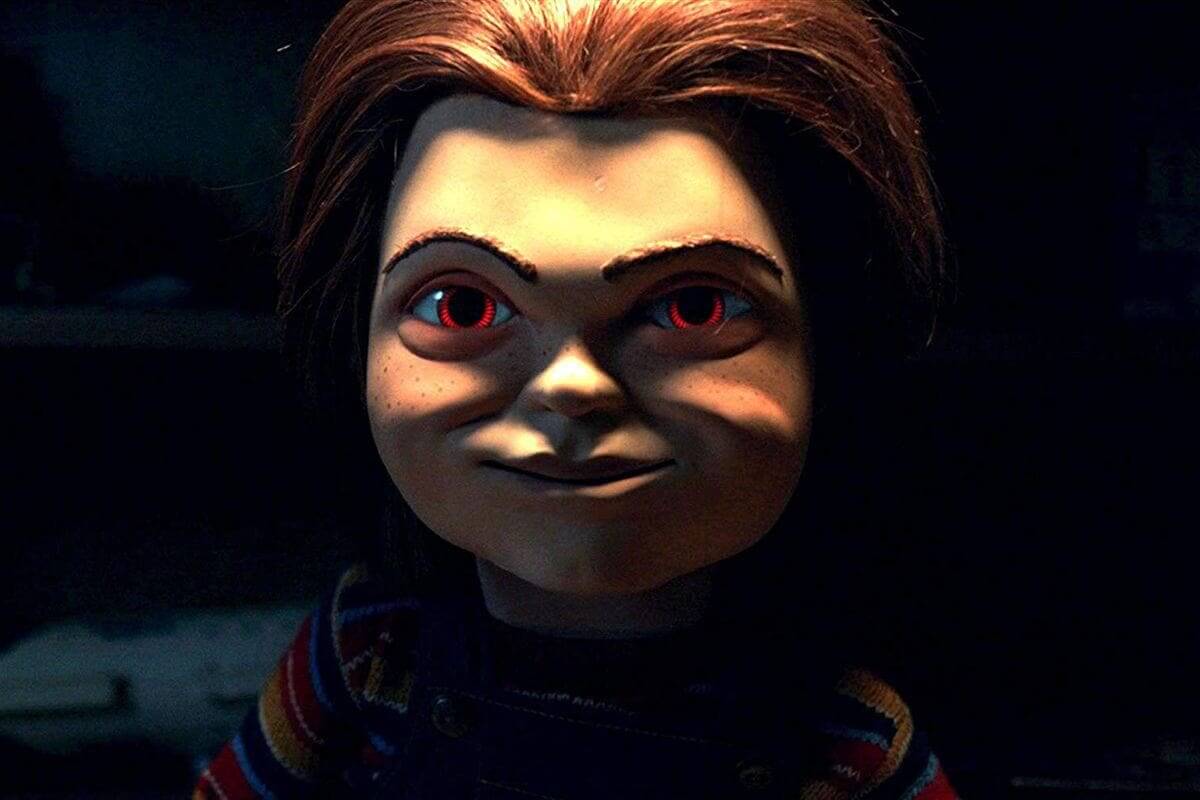[Editor’s Note: Welcome back, Fiends! If you haven’t already read Chris’s Poor Decisions of Polarizing Remakes – Part One, go ahead and do so now. The second half of his list of the biggest goofs in horror remakes will be here when you get back, starting with…]
Friday the 13th (2009) – Rambo Jason’s Weed Lair
There is absolutely no shame in admitting that Friday the 13th and the character of Jason Voorhees are not what you’d consider “complex.” It’s a basic premise, a monstrous slasher tears his way through unsuspecting/often naughty teens that camp in the wrong spot, and that’s why we LOVE it. So, it was a fascinating choice by Marcus Nispel (director of the well-done Texas Chainsaw remake) to give Jason a personality remake that can only be described as absolutely bananas.
Though it has never been thoroughly explained to my knowledge, we are to believe that the hockey-masked slasher A.) cultivates a weed farm, or at the very least, benefits from its close proximity B.) lives and scurries through a series of underground tunnels, where he imprisons and apparently feeds his captor C.) has overcome severe developmental disabilities to become an avid bowhunter capable of hitting a bullseye target (no pun intended) on a moving speedboat. While none of this is necessarily out of the realm of a Friday the 13th entry, it’s a bizarre waffling between a realistic take on a killer and seriously unrealistic properties. I commend the idea of trying something different with a killer who has hit the screen 11 times beforehand, but… just…wow.
The Thing (2011) – Overlaying Practical Effects with CGI via Windows 95
Alright, it wasn’t done with Windows 95. However, anyone who has seen the 2011 remake of John Carpenter’s 1982 remake of 1951’s The Thing from Another World (remake Inception, anyone?) would argue that mid 90’s Bill Gates probably could’ve done it better. Carpenter’s version of the film is well known and praised for its legendary use of grotesque practical effects, so naturally audiences would expect something similar from director Matthias van Heijningen Jr’s updated version. This is not what happened. The computer-generated alien/human monsters look bad. Really, really, bad. What we should all find all the more infuriating is the film was shot in its entirely WITH practical effects!
Created by Studio ADI by students of the great Stan Winston, the effects can be seen in behind-the-scenes footage leaked online, and frankly, they are fantastic. Equal parts realistic and gross, the advancement in practical technology is evident, assuring The Thing wouldn’t be a 2011 high-definition film stuck with a 1980s look. Now as the story goes, in a move that can only be looked back upon as self-sabotage, the higher-ups at Universal were not happy with the look of the final product. In turn, the studio had the entirety of the practical effects overlaid with CGI. With that, the film was panned by critics and audiences alike for its videogame-like villains. Considering the cast and plot of the film were, at worst, acceptable, it’s fair to wonder if 2011’s The Thing could have been more than the forgettable failure we remember it as.
Black Christmas (2019) Trading Poetic Subtlety for a Crude Lecture
A common complaint found among some horror fans is that recent genre entries have become deeply politicized, trading scares for lectures. Other fans point out that horror films have always carried political messages. Like nearly all arguments, the answer lies somewhere in the middle. Horror has been a fantastic mechanism to explore issues, political and societal, for generations. That said, many of the horror films we consider “great” do so in a graceful blend of story and message. 2019’s Black Christmas did the opposite.
The rare second remake (we’re skipping over the 2006 entry) forgets what makes movies with heavy-handed messages so powerful – intriguing plots and sound dialogue. The unfortunate result was a film neither satisfying enough for the casual viewer or a profound example of female empowerment that can be held in high regard. It’s all the more infuriating when you consider one of the better examples we have of such a movie is…the original 1974 Black Christmas. It’s evident that director Sophia Takai had good intentions of creating a slasher for an underserved fanbase, but as the saying goes, the road to hell is paved with good intentions. Audiences are too intelligent, often at a younger age than studios seem to believe, for such on-the-nose content.
Child’s Play (2019) – Hijacking Chucky
Controversial from the start, MGM proceeded with plans to remake 1988’s Child’s Play while the creative team of the original franchise was still actively releasing films. To modernize the story, filmmakers did away with the idea of a serial killer possessing a doll, instead opting for a tale of artificial intelligence gone rogue. The massive problem with the Child’s Play remake is the hijacking of the character of Chucky. Simply put, there is no reason whatsoever that the name and likeness of the original 1988 character is featured in the new film other than to monetarily capitalize on a popular horror slasher.
Not dissimilar to Robert Englund’s Freddy Krueger, Chucky (or Charles Lee Ray) was very much the product of actor Brad Dourif and a story that allowed the doll to have a personality. The AI doll of the remake is devoid of a human personality, so why not start fresh? The remake could easily have kept the title of Child’s Play and introduced a brand new killer doll to complement a brand new story. Instead, every time one of the human actors refers to the doll as Chucky it induces a cringe. This is not Chucky, and the film suffers from their attempt to pretend that it is. The undercutting of series creator Don Mancini is made exponentially worse when you realize how much better the remake would’ve been without it.
A Nightmare on Elm Street (2010) – Refusing to Embrace the Darkness
Remaking A Nightmare on Film Street had to be a task both enviable and unenviable. On the bright side, you get to retell a tentpole franchise’s story within a world that is literally without limits. On the other hand, you are entrusted to bring back a character whose personality and appearance became extensively engrained with the actor who previously portrayed him, Robert Englund. Rather than attempting to imitate, which almost never works, it’s probably best to tell a new story with a few familiar callbacks to the original.
Now, it seems that the unique story the 2010 remake wanted to tell was an allegorical tale of repressed sexual abuse and how its manifestation afterward further in life. Instead of dealing with their childhood trauma, the kids are counseled into suppressing the memory of Freddy, who returns with a vengeance to kill the children responsible for outing his crimes and de-facto causing his death. This is one hell of a dark take on the slasher, and honestly, it could have made for an absolute stand-out film that may not have been rivaled by anything in the slasher genre. The problem with this remake is the filmmakers (or likely, the studio execs) wavered, perhaps afraid to confront such a heavy subject head-on.
The sad result of this is a movie that can’t decide whether it wants Robert Englund Freddy or a new, more repulsive Freddy. You simply cannot give quippy one-liners to a pedophile. No one is laughing anymore, because the jokes are really grotesque with that sort of subtext. Fans that wanted the classic Freddy can no longer associate with him, and fans that wanted a dark take on the slasher can’t take him seriously. With no one really satisfied with the outcome, we’re now over a decade later without another Nightmare entry.
What bad remake decision would you call the biggest mistake? Are there any remakes you would consider “perfect”? What remake do you wish could be stricken from existence, banished to the depths of forgettable hell? Let us know over on Nightmare on Film Street’s Twitter, Instagram, and Facebook pages! Thanks for reading!









